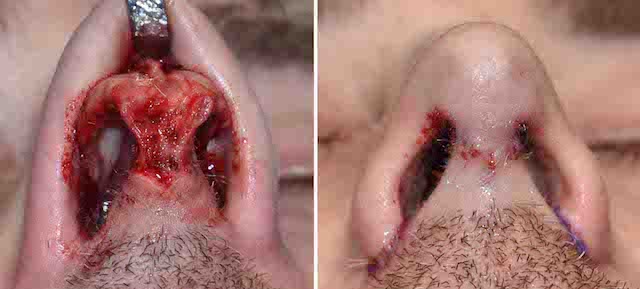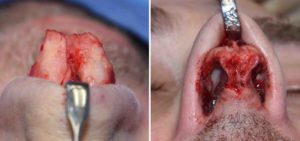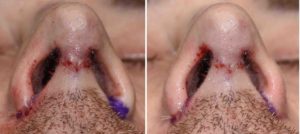Background: The shape of the tip of the nose is controlled by its underlying cartilaginous structure. Between the caudal end of the septum and the paired overlying lower alar cartilages, the shape of the tip of the nose and the nostrils are formed. Given the many variances of the size of these cartilage and how they can come together creates the unique shape of each person’s nose.
While everyone’s nasal tip shape is unique, there are some standard tip shape abnormalities that have been described. One of these is the bifid nasal tip. Often called a ‘butt nose’ by patients, its anatomic basis is because the two lower alar cartilages remains more widely apart at the midline. This results in a groove between them from the tip down through the columella which can be seen through the overlying skin. This results in a very distinct midline indentation in the skin and hence the buttocks descriptor. The bifid nasal tip occurs with equal frequency in both men and women. It is also associated with a wider nasal tip as one might expect.
In the male rhinoplasty patient that has a bifid nasal tip, other more common corrections are also done as well including elimination of a dorsal hump, modest tip rotation and nostril narrowing.
Case Study: This male felt that as he got older his nose became wider and the tip was dropping as well. He was also keen in having his nostrils narrowed as well. He had a discernible midline groove down through the tip of his nose.
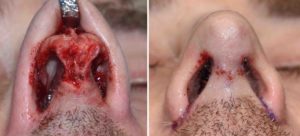
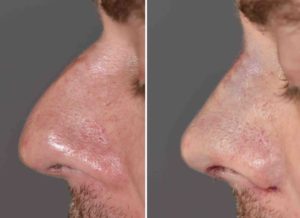
Case Highlights:
1) The ‘butt nose’ or bifid nasal tip is the result of the lower alar cartilages being widely separated from the dome done through the columella.
2) Columellar strut grafting and suture apposition of the lower alar cartilages is an effective treatment for the bifid nasal tip.
3) Creating a straight dorsal line and a less wide nasal tip are often the basic goals of a male rhinoplasty.
Dr. Barry Eppley
Indianapolis, Indiana

